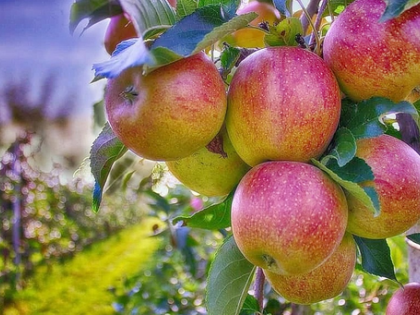Himachal's heritage & economy to get boost from GST reforms
By IANS | Updated: October 1, 2025 21:45 IST2025-10-01T21:41:19+5:302025-10-01T21:45:12+5:30
New Delhi, Oct 1 GST 2.0 will benefit Himachal Pradesh across various sectors - whether it is a ...

Himachal's heritage & economy to get boost from GST reforms
New Delhi, Oct 1 GST 2.0 will benefit Himachal Pradesh across various sectors - whether it is a weaver in Kullu, an apple farmer in Shimla district, a tea grower in Kangra Valley, or a factory worker in Baddi, they all stand to gain with the rise in demand for their products and decline in input costs due to the tax rate cuts, according to an official statement issued on Wednesday.
Himachal’s famed handloom products, especially its shawls and woollen textiles, are expected to get a boost as GST on these products has been slashed from 12 per cent to 5 per cent. In the Kullu valley, over 3,000 weavers involved in self-help groups produce the brightly patterned, GI-tagged Kullu shawls. These weavers are part of an estimated 10,000-12,000 handloom artisans statewide. These Kinnaur district’s shawl makers and those who derive their livelihood from these handicrafts.
The Chamba rumal is a GI-tagged, miniature hand-embroidered cloth, made primarily by women artisans in the Chamba district, which will see a higher demand due to the cut in GST to 5 per cent for these handkerchiefs.
Traditional leather slippers from Chamba are another GI-tagged product, produced by hundreds of small cottage craft units. A lower GST rate will make their pricing more competitive against machine-made footwear and encourage sales of indigenous chappals. This will help artisans improve their margin.
From intricate wooden doors and panels to furniture, carved wooden products are produced in areas like Chamba, Kinnaur, and Kullu. This industry hires thousands of rural artisans in Himachal. The new GST rates put wooden articles in the 5 per cent category, which will stimulate demand for locally made wooden furniture and souvenirs. It will not only make these items more affordable but also support local artisans.
Certain parts of Himachal produce bamboo products such as baskets and other eco-friendly crafts. The industry employs hundreds of artisans, many coming from marginalised communities. These products, which were taxed at 12 per cent, now fall under 5 per cent.
The GST reforms have extended significant benefits to the agriculture sector of Himachal’s economy as well.
Kangra is known as the “Tea Capital of North India” for its lush tea gardens in Palampur and the surrounding areas. Nearly 5,900 small tea gardens cultivate tea in Kangra with plantations and factories employing thousands of workers. This famed tea, carrying a GI tag, is now GST-exempt, with loose tea now attracting zero per cent GST. The new GST rates have effectively made loose tea leaves cheaper for buyers.
Kala zeera (black cumin seed) is an aromatic spice grown in the high-altitude districts of Himachal Pradesh. This spice, known for its distinctive aroma and medicinal properties, is cultivated by a few hundred farmers and collectors in the region. The reduction in GST from 12 per cent to 5 per cent will likely lower the price of the product, resulting in higher demand. Farmers will see increased orders for their produce, and it could encourage expanded cultivation.
Apples constitute around 80 per cent of Himachal’s horticultural output. Grown across Shimla and other apple belts, this industry impacts thousands of apple growers. These growers rely on cartons, trays and other packaging materials to send their produce to markets across India. A reduction of GST to 5 per cent on such materials is expected to ease input costs, meaning cheaper boxes, directly benefiting the growers and other local packaging supply units.
The GST reforms have reduced rates of agricultural inputs like fertilisers to 5 per cent. This will promote farm mechanisation, improving farming efficiency and output.
Himachal’s food processing industry in Baddi, Barotiwala and Nalagarh will benefit from the reduced GST rates to 5 per cent on a variety of processed foods. For its industrial sector, this is significant because these processing units employ nearly 10,000 people in the region. Lower taxes on food items would likely reduce retail prices, which would increase demand and boost sales volumes.
Besides, the state’s medical industry in the Solan district provides direct and indirect employment to around 10,000 people in the region. With many medical devices and apparatus now being taxed at 5 per cent, this will significantly favour this industry.
Disclaimer: This post has been auto-published from an agency feed without any modifications to the text and has not been reviewed by an editor
Open in app